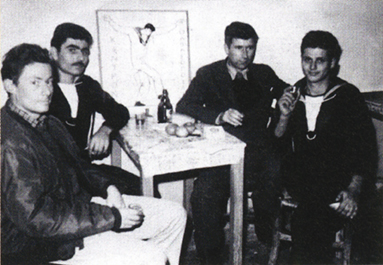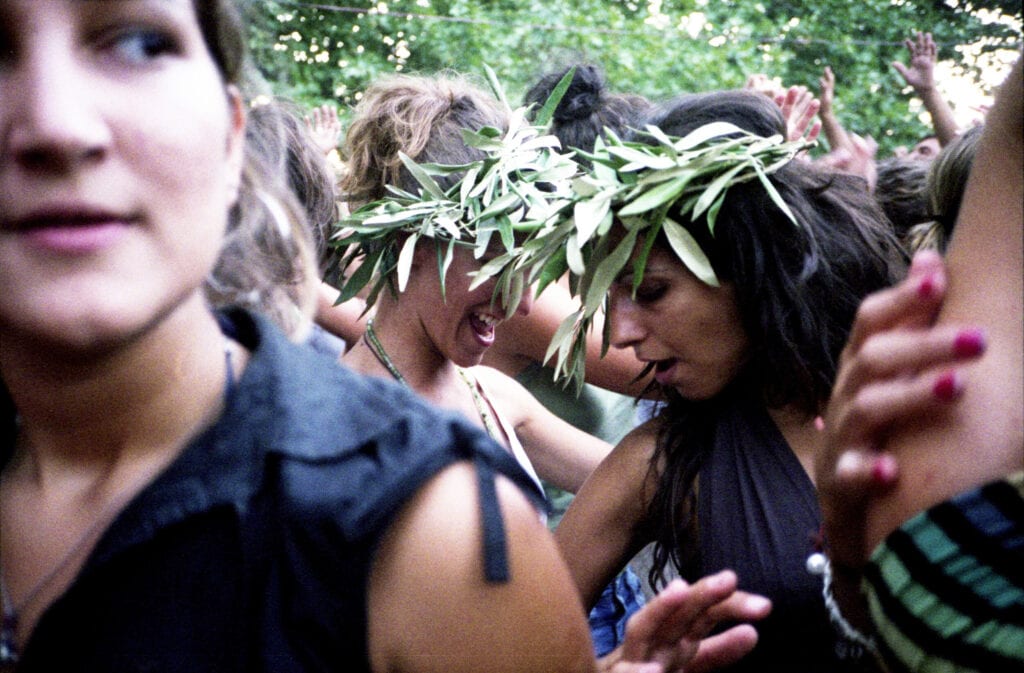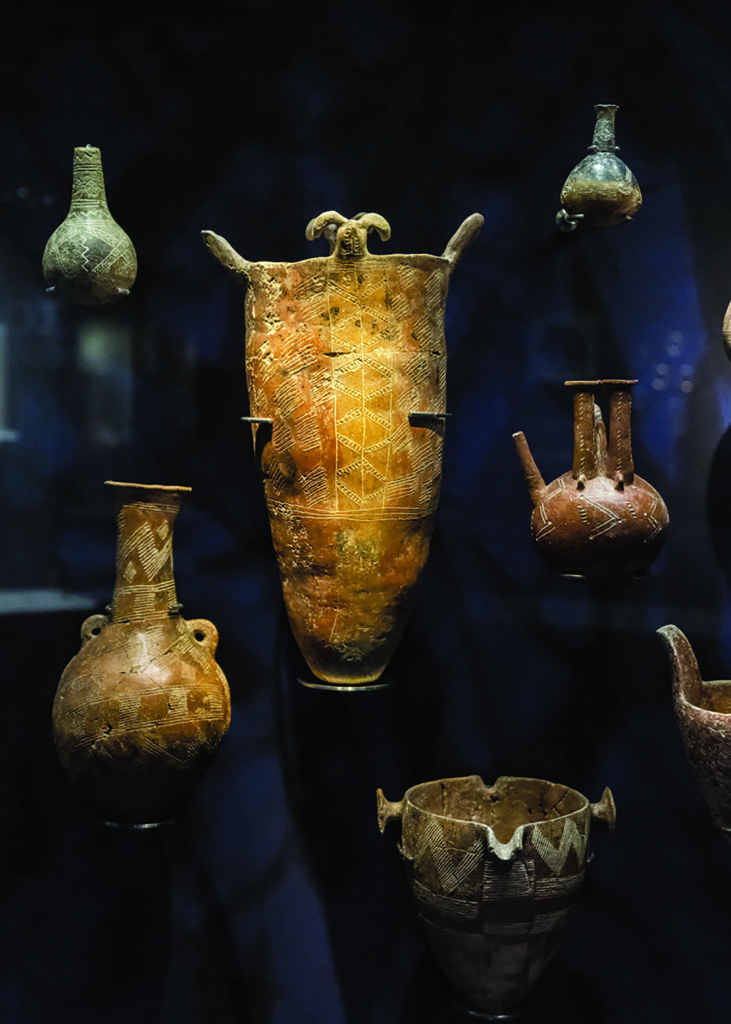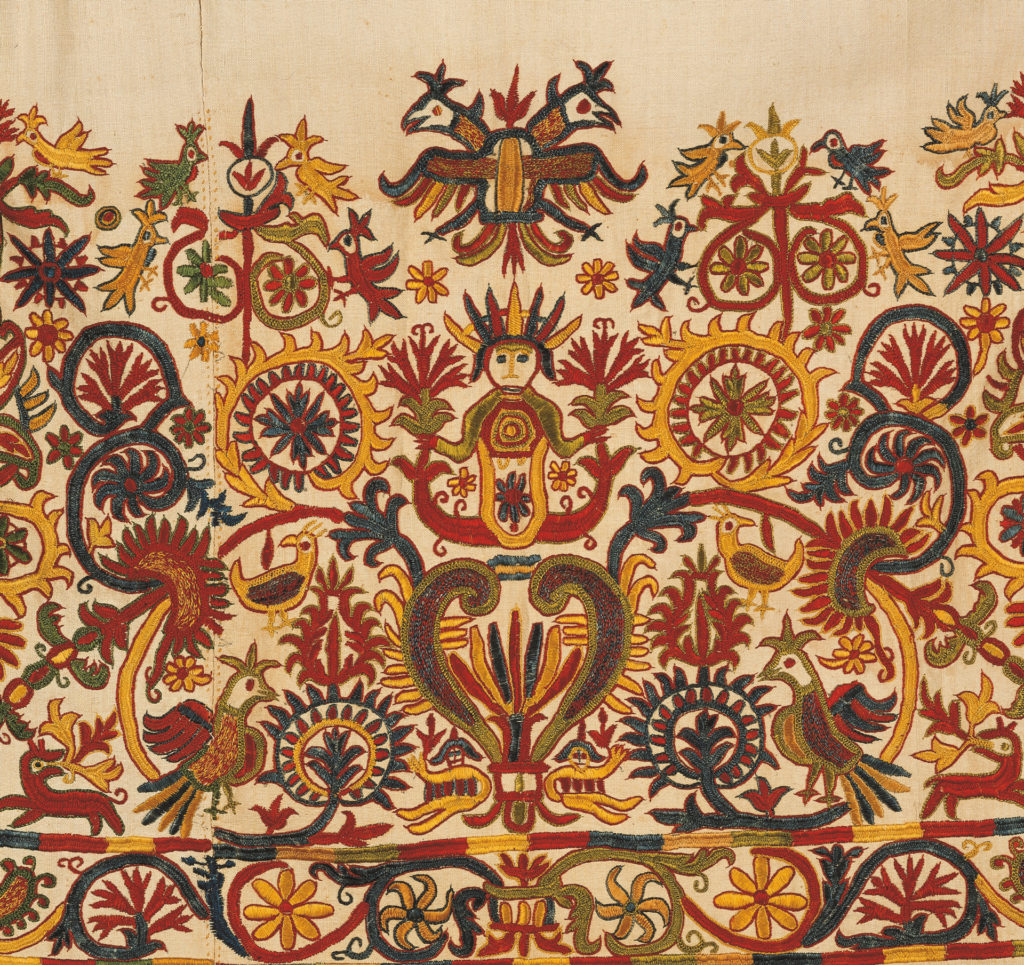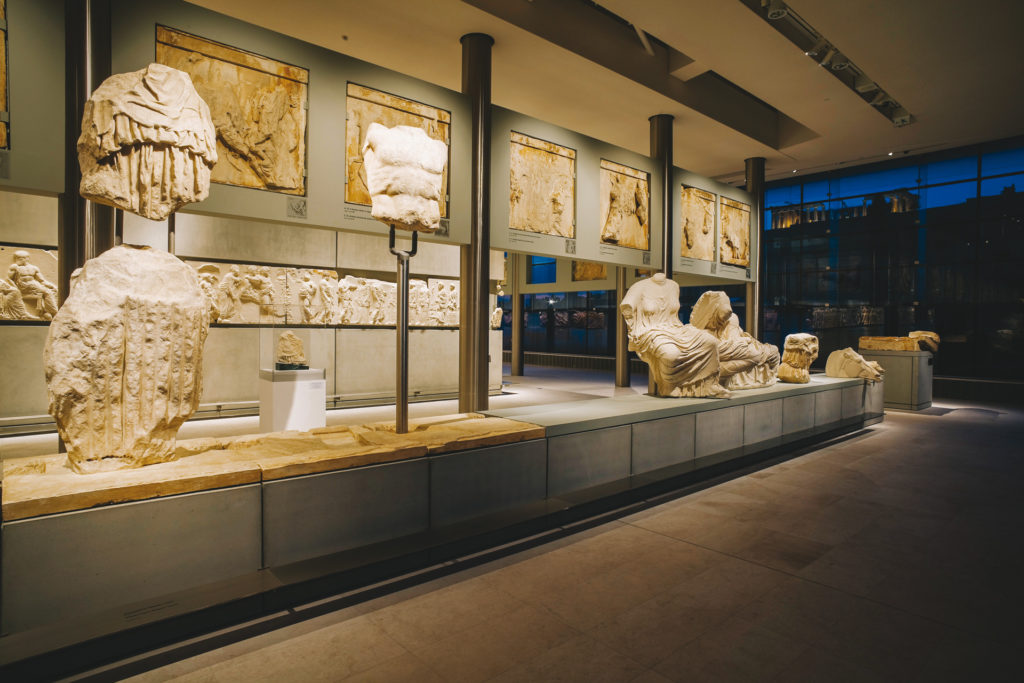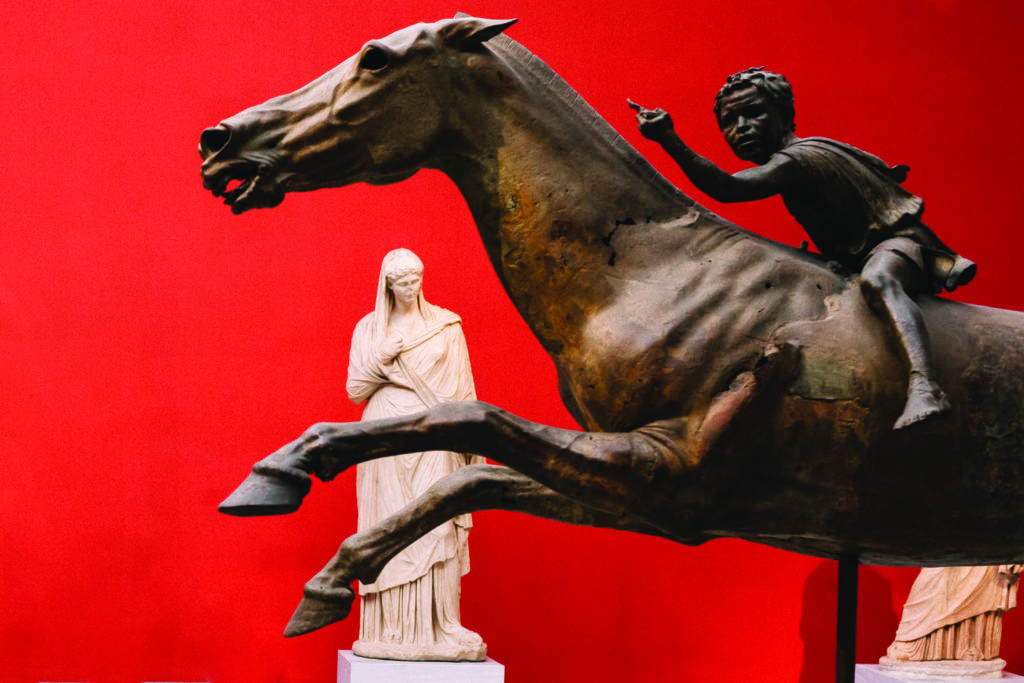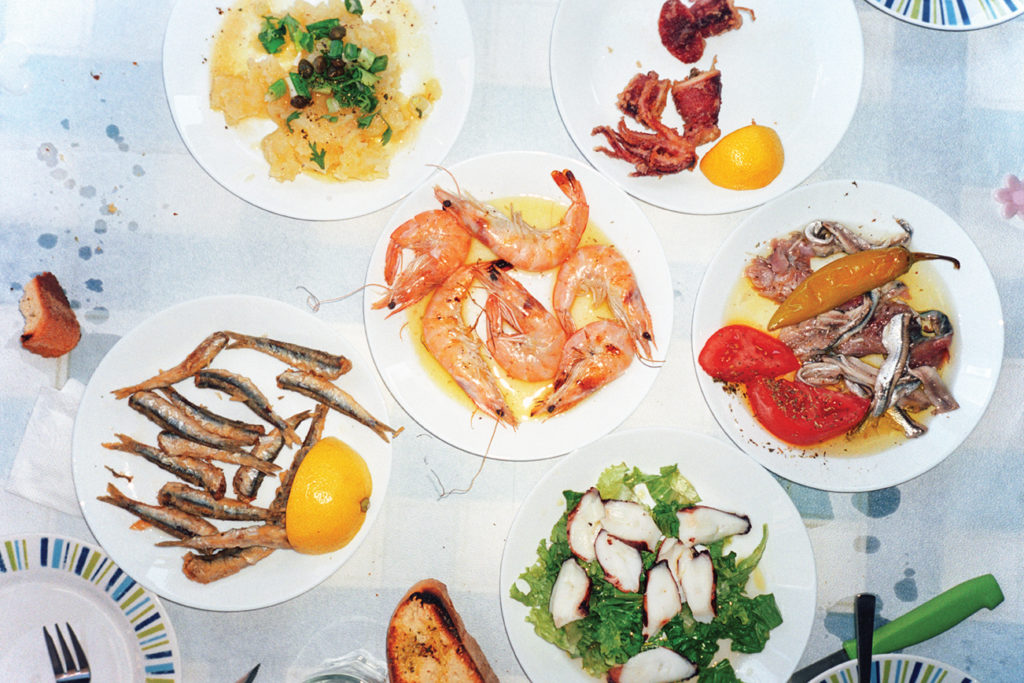John Craxton was a painter who led a nomadic life. Ever since he was a child, he struggled settling down in one place. Unable to adapt in a strict educational system, he changed schools often, a practice that did not change, even when he started taking art lessons. His inability to conform to what is considered a “normal” life could be attributed to his origins, a large family consisting of artists and bohemians. Growing up, like everybody in his generation, he experienced World War II, the London bombings and the deprivation, all of which left their mark on the young artist. Soon, feeling smothered in a cold, damp and dark England, succumbed to his innate need to escape, he embarked on a journey to a creative and carefree life. Craxton started travelling at a very young age and when he finally discovered Greece – a country he had dreamt of since he was a child – he fell in love with this land. His obsession went beyond the habitual respect for the Classics and antiquity and flirted with the light, the sky, the rocks, the wild nature and, above all, the people inhabiting this corner of the world.
Born in 1922, one of the most talented and promising English artists, Craxton was barely 20 years old in 1941, when he his first solo exhibition with sketches and gouaches took place at the Swiss Cottage Cafe in London. This is where he met Peter Watson, co-founder of the Art magazine “Horizon”, who would prove to be his greatest fan and supporter. Thanks to him, he would also meet the photographer Joan Rayner, Watson’s neighbor and future Ms. Leigh Fermor, a woman who would play an instrumental role in Craxton’s life.
Τhe artwork he created for the book “The Visionary Poems and Passages, or The Poet’s Eye” made quite an impression in London. The art critic Cyril Connoly introduces him to the Greek poet Nanos Valaoritis. Around that time, he is introduced to the work of the Greek painter Nikos Hadjikyriakos-Ghikas. Soon they would meet in person. This was the beginning of a lifelong friendship. Ghikas invited Craxton to visit Athens, thanks to Lady “Peter” Norton, wife of the British Ambassador in Athens which he managed to do in May 1946.
Meanwhile, his good friend Joan had entered into a relationship with the philhellene and WW II resistance hero, Patrick Leigh Fermor. Leigh Fermor suggested to Craxton that he should visit the quiet island of Poros, where he could devote himself to his art. Craxton followed his advice and he soon settled in Poros, where he had the opportunity to meet and become friends with the poet, George Seferis. Above all, the single and most important effect of this trip was that the splendor of Greece was revealed to him, the magnificence of the land he always dreamt about and innately suspected that it would become the ideal place for him to live in.
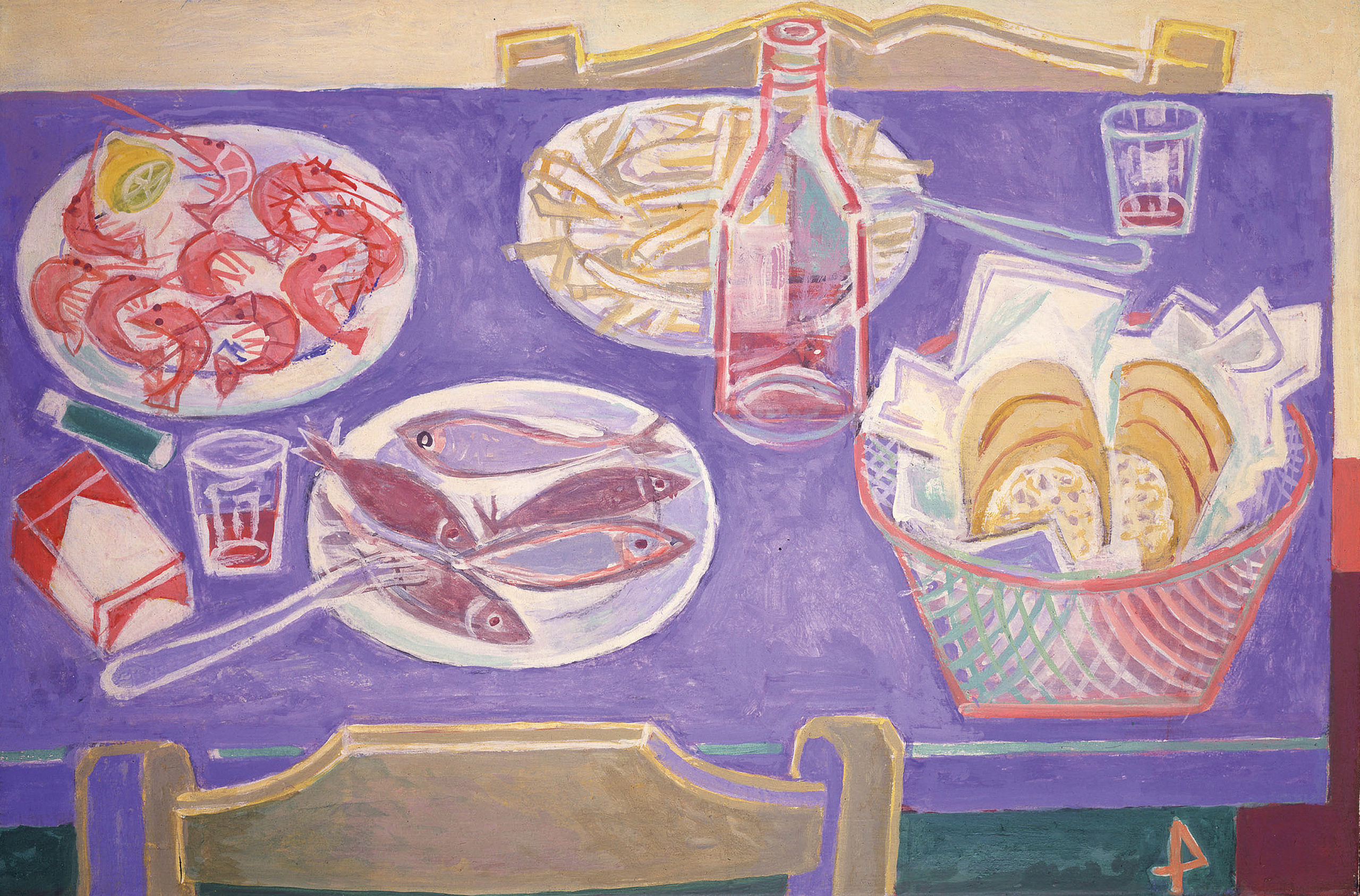
John Craxton, Mezedes, 1983-1984, Tempera on Canvas, 41 x 61cm. Private Collection © Estate of John Craxton. All rights Reserved.
Craxton had always been fascinated by Greek Mythology and culture. In Poros he fell in love with the light, sky, sea and colors. He surrendered to a world of senses, flavors, images and sounds, to the liberating devil-may-care way of life he saw everywhere around him, on the beaches, the taverns, inherent to the simple people of this small island.
He spent his winter painting in Poros, together with long-time friend Lucian Freud, who came to visit him. The result of this visit was his first solo exhibition in Greece, organized by the British Institute with the assistance of Nikos Hadjikyriakos-Ghikas. With his paintings, the 23 year-old artist managed to capture the essence of island life.
When he designed the set and costumes for Ravel’s “Daphnis and Chloe” in1951, the choreographer, Frederick Ashton, invited him on a Greek islands cruise with Margot Fonteyn. Craxton accepted the invitation and brought along Joan Rayner and Leigh Fermor. Convinced by now that Greece was his own private lost paradise, he decided to tour the whole country and in the two years that followed he travelled to Chios and Samos, creating a series of sketches and paintings. During the same period, he designed two book covers inspired from Crete: “The Stronghold – An Account of The Four Seasons in The White Mountains of Crete” by Xan Fielding and “The Cretan Runner: His Story of The German Occupation” by George Psychountakis, translated by Patrick Leigh Fermor. Psychountakis, an important man from Crete, was a shepherd with no formal education. His bravery, while acting as messenger between the resistance fighters and the British SOE, became a symbol of the of Cretans’ resistance against the Germans.
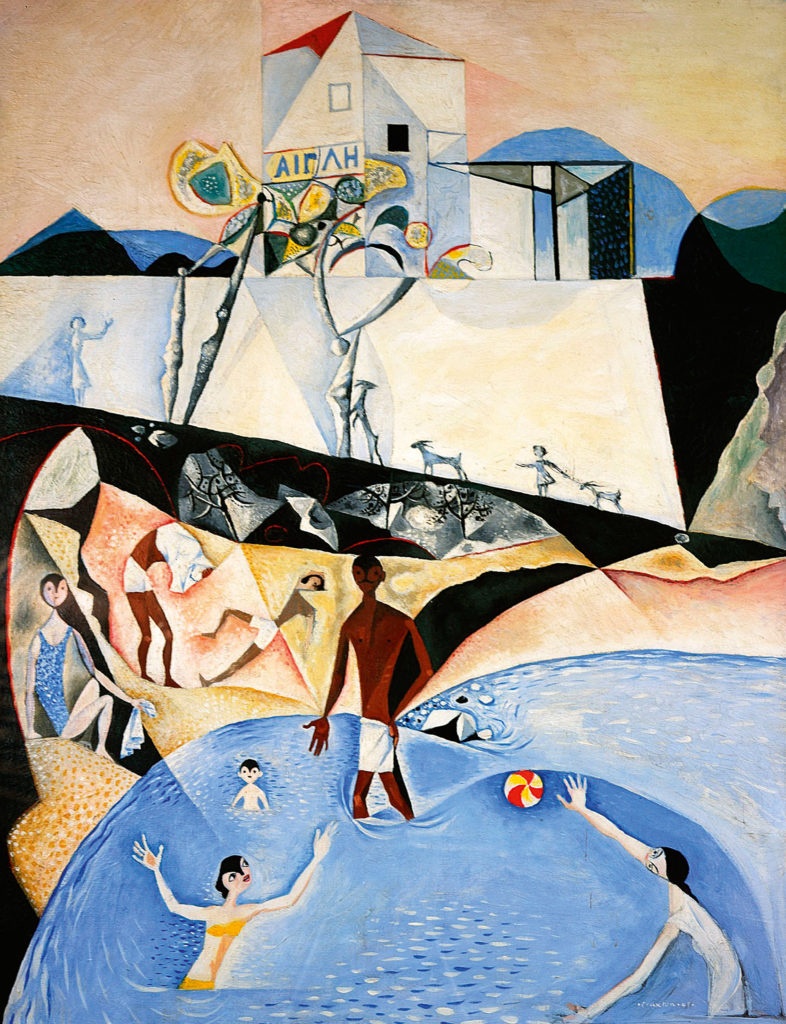
John Craxton, Beach Scene, 1949, Oil in canvas, 76 x 58,5 cm. Gallery Oldham. © image Gallery Oldham. © Estate of John Craxton. All Rights Reserved.
The house of Nikos Hadjikyriakos-Ghikas in Hydra became the bastion from where Craxton and the Leigh Fermors organized their Greek excursions for many years. In that house Patrick Leigh Fermor wrote “Mani”. When the beautiful mansion in Hydra was destroyed by a fire in 1961, Craxton personally collected all the objects, which survived the fire and assumed the responsibility of making all necessary arrangements on behalf of his friend, who did not have the courage to go back to the burnt house. This event may have been the catalyst that made him buy a house in Chania, Crete in 1963. By then, he had spent long periods living in the Venetian port, creating new paintings and completing old canvases.
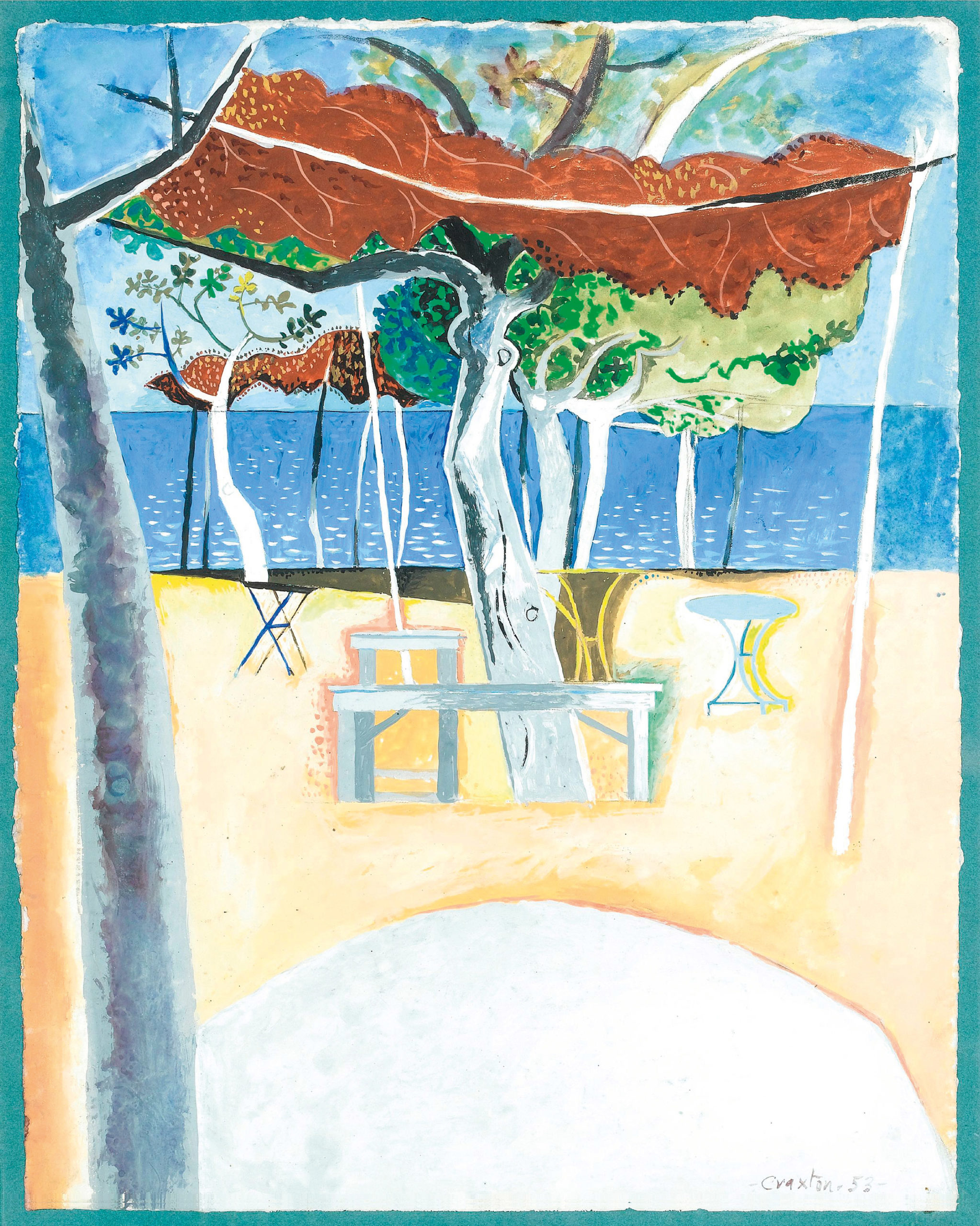
John Craxton, Taverna by the sea, Poros, 1953, Pencil, watercolour and gouache, 60,5 x 48 cm. Private collection, © image Βοnhams. © Estate of John Craxton. All Rights Reserved.
Craxton fell in love with Crete for life, its wild landscape and history, the wide horizon of the sea, the passion and perseverance of the Cretans. He sought out the resistance companions of Leigh Fermor in the White Mountains and painted their portraits. Thus, they became his own companions and Crete his second homeland. He divided his time between London and Chania. His tours regularly brought him to the beautiful and peaceful hideaways of the Leigh Fermors in Kardamyli, Peloponnese and of Ghikas and his wife Barbara in the island of Corfu. It was in their house that he sneaked in, in 1973, at a time when the military junta had banned him from entering Greece. While the official excuse for that was the fact that he hung out at seamen’s haunts in Chania, presumably to extract top secret information, the true reason was that he had expressed his opposition to the destruction of the picturesque Venetian port of the city, as some local stakeholders were planning on modernizing it. He did everything in his power to stop this madness and, the fact that the magnificent old port of Chania is still intact is to a great extend owed to Craxton.
In his interview for the catalogue of his retrospective show in London’s Whitechapel Gallery in1967 he wrote: “I have lived and travelled in Greece a lot. I have been charmed by the country and its people, thanks to a mutual liking, a natural well-being and the way my personal philosophy seems to have an affinity with the Greek philosophy, more than anything else”. In 1964 he acted as a consultant to Michalis Kakoyianni’s film “Alexis Zorbas”. Even though he didn’t like neither Kazantzakis book (he believed it was unfair to Cretans and the Church) nor its full of clichés cinematic version, thanks to “Zorba” he became friends with another “British Cretan”, the Oscar winning cinematographer of the film, Walter Lassaly, who had also chosen Chania as his permanent residence. The huge international success of Zorba attracted hordes of tourists in Crete, “sullying” the authentic way of life that Craxton adored and rendered in his paintings.
He returned to Chania for good, after the fall of the junta in 1977. By then he had already become part of the local society. He had adopted the local customs, the Mediterranean diet, drinking tsikoudia and wine and enjoyed good food and drinking amongst friends. He spent many hours in Kafeneia and Tavernas discussing – in perfect Greek with a dash of Cretan dialect – while eating and drinking, and he always carried a sketch book with him, used to draw everyday life scenes: dishes, musicians and men dancing. He would become the life of the party, an inexhaustible explosion of fun.
His art depicted the life in the Kafeneio and the Taverna, places where one could often find Craxton, assisting the cook in the kitchen, or even undertaking the whole cooking procedure. Even though his natural habitat were salons and galleries, rubbing shoulders with intellectuals and famous artists, he actually felt most at home and happiest next to the people who toiled. A truly independent spirit, a champion of liberty in all its forms, who believed in friendship and being a good neighbor, always honoring the people he associated with. Every time his dearest friends, the Ghikas and the Leigh Fermors, visited Chania, his dearest neighbor, Katina, prepared a Lucullan feast. Craxton was very witty and one of his best quips was that “the most wonderful sound in the world is of people talking over a good meal”.
Before coming to Greece, Craxton’s role models were Picasso and Miro, but next to Ghikas he discovered that the harsh, rocky and indomitable Greek landscape, with its sharp lines and volumes, gave cubism a new perspective. His adolescent interest in ancient Greek art peaked, when he came into contact with Byzantine hagiography and mosaics and even the modern people he painted resembled mythological creatures. One of his favorite themes was the Cretan wild goat, which is reminiscing of Pan. As his biographer, Ian Collins, said “the early pictures are dark, melancholic and focused on a solitary figure, who might be called a poet, a shepherd or a dreamer, but who in fact was an emblematic self-portrait of the artist himself. When he got to Greece, he became absorbed in light and color and in other people, rather than in himself. He poured his joy for life into his joyful pictures”. What did these “joyful pictures” consist of? Dancers, musician playing Cretan lyre, seamen eating and drinking, shepherds and fishermen, banquets with local delicacies, canyons and orchards, mountaintops and meadows.
The ’70s was a reboot era for Greece and Craxton was a middle-aged man, who had settled down in his convictions and the lessons he had learned in life were reflected in his work: Leigh Fermor’s book covers, the wall of Ghikas’ home in Kriezotou Street, Athens, exhibitions in important London galleries. This is how he spent the ’80s and ’90s, until the friends, with whom he had forged a lifetime of creativity and camaraderie, started to pass away.
John Craxton never stopped painting. In 1993 he was anointed a member of the London Royal Academy of Arts, the same year that the Christopher Hull Gallery exhibited a series of portraits he had created between 1942 – 1991. David Attenborough wrote the texts of the catalogue that accompanied the exhibition. However, all these had little impact on Craxton, who considered life in Greece as a higher art form than painting! One British reviewer claimed that he was a painter who “struggled hard against a handicap of happiness”. But it was precisely this happiness that he experienced so uniquely in Greece and especially in Crete, which gave him all his strength as an artist and defined his whole life.
The last time he visited Chania was in 2006. He died in London on November 17, 2009, aged 87, while constantly planning on going back to his house on the Venetian port and looking forward to sitting with his Cretan friends at a table once again, overlooking the bright blue Mediterranean skies.


